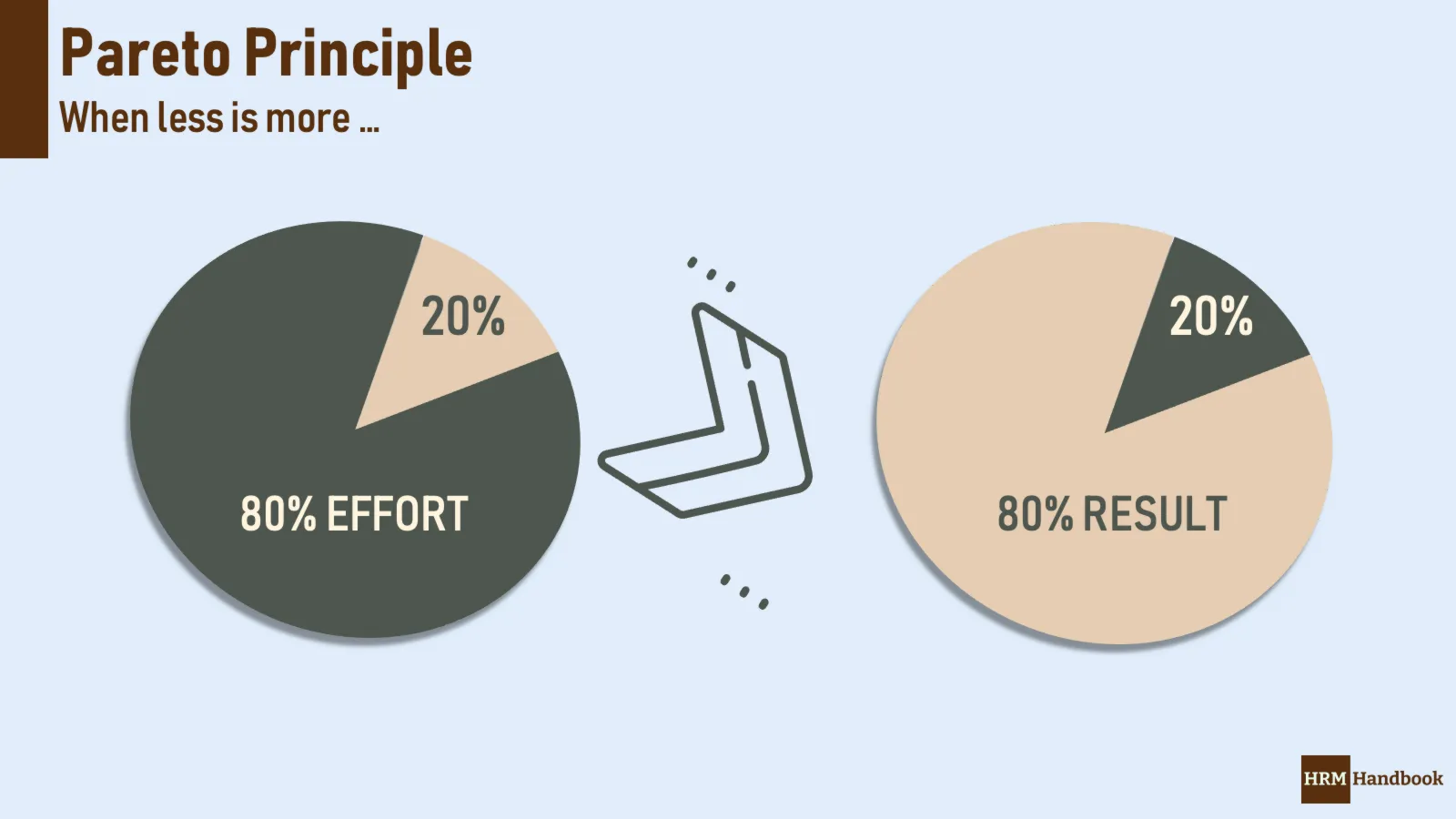Pareto Principle
It is also known as the Pareto rule. It is very simple, it says that 20% of the effort will ensure 80% of the result. However, it is easily transferable to other areas of life as it is quite general. And at various times it can be found in virtually all areas of life. It’s always good to remember this rule when deciding what to do next. Sometimes we don’t have to put in that much effort to get a reasonably satisfactory result.
The rule comes from Italian economist Vilfredo Pareto, who noticed that 80% of the peas in his garden came from 20% of the pods. And that’s not the only place where it applies.
Another classic example is that 20% of clothing sizes appeal to 80% of customers. So that means that regular sizes are the first to sell out because they are in the highest demand. And equally, it means that the closer to the edge of the size distribution you are, the less chance you have of having it ordered by a department store. So as a result, you have more than a 50% chance of your size being out of stock every time.
In companies, finding the important 20% is considered the holy grail because it can help optimize costs. 80% of complaints will only be generated by 20% of the different causes. In practice, this means that you can quickly reduce the cost of resolving customer complaints just by focusing on the 20% of critical issues.

Equally, it is often the case that only 20% of the product portfolio generates 80% of the revenue, and it is then those key products that need to be intensively addressed.
Similarly, it is not necessary to push all projects to an often very expensive conclusion, usually you only need to have 20% of the solution that will deliver 80% of the result. And then just focus on continuous improvement, which is not so demanding on financial and human resources. Many employees have a problem with this approach, but from a cost perspective it is often the best possible approach.
Of course, there are situations where it is not appropriate to apply the Pareto principle. For example, in the aerospace industry, in traffic management or in the health sector, the 20% is often not enough, as the additional costs can pose a significant risk to human lives.
Pareto Principle and Human Resources
In Human Resources, we are often looking for the perfect solution, but it is expensive, complex and slow. It is often better to accept some imperfection and the solution will work sufficiently for everyone. It is important to know the risks, accept them and treat the biggest risks if necessary.
It’s just a matter of identifying what is important for the functioning of the company. It’s not about finding perfection for HR, it’s about a workable solution for the company.